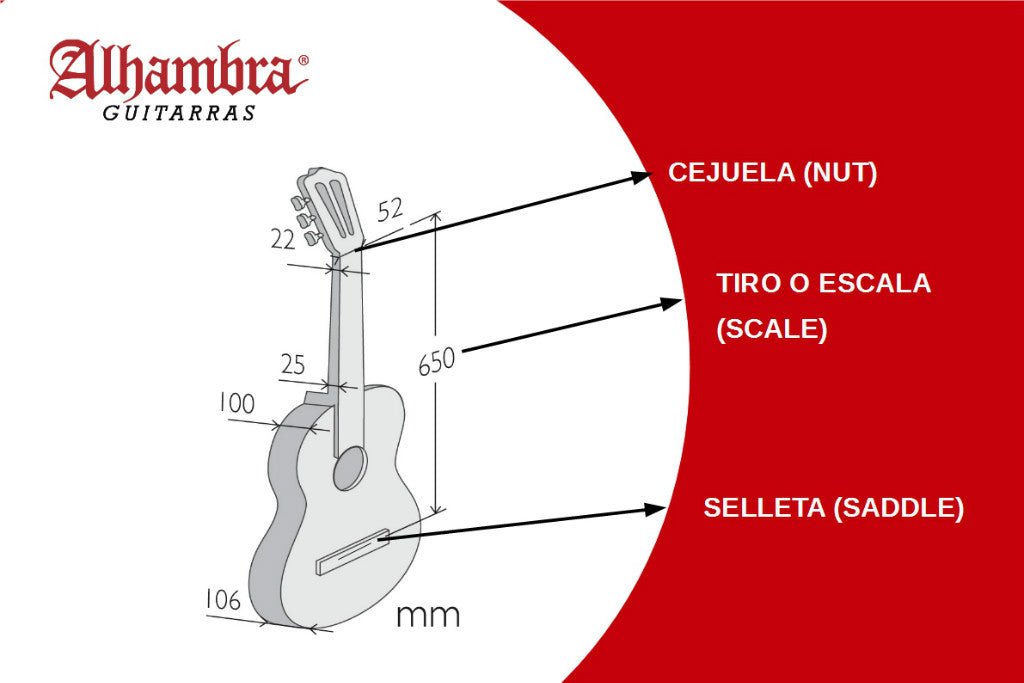
The guitarist and the dimensions of the Spanish guitar
The short-scale Spanish guitar is the most common for guitarists. It measures 650 mm from saddle to nut.
It's important to know the measurements of a Spanish guitar, firstly to know which one best suits the guitarist's physical condition, and secondly, to know if it's suited to the style of music they want to play.
Long and short scale lengths have always been the most common scale lengths used by guitarists on the Spanish guitar. As mentioned above, the short scale length is 650 mm between the saddle and nut , and is the most commonly used length today.
The Spanish guitar's long scale has several versions, the most common being 664 mm and 660 mm . One centimeter, or 1.4 centimeters, seems like a seemingly minimal difference, but it matters when playing.
It is also quite common to find a 640 mm scale, a dimension that makes it easier for guitarists with small hands to play.
The dimension of the nut
The width of the nut, also known as the neck, is closely related to the size of the hands and the style of music being played. On the Spanish guitar, we normally find a dimension of 52 mm . This is the most common nut size today. For guitarists with larger hands, the nut can be one millimeter larger, reaching 53 mm .
On the contrary, for greater comfort and speed, especially when changing chords, as long as the fingers fit, we find 50 mm or 48 mm nuts .
At Alhambra Guitars, these nut sizes are available on cutaway and crossover models . The latter feature a very versatile design that allows for playing a multitude of styles. On the other hand, on acoustic guitars , the nut size is 44 mm.
The action of the strings.
Another important factor to consider is string action. This measurement is the distance between the top of the fret and the bottom of the strings. It's typically measured at the 12th fret and the sixth string.
On beginner, flamenco , and acoustic instruments, this action is lower. On Spanish concert guitars, the action is the highest, usually around 5 mm.
The proportionality of the instrument.
Finally, it's interesting to note the instrument's proportionality. The midpoint of the scale is located exactly at the 12th fret . If we were to divide the scale into four parts, the points that mark the different sections are: the 5th fret, the 12th fret, approximately the center of the soundhole, and the saddle.
The 7th fret is equivalent to a third of the scale. These are very important points for guitarists to keep in mind when creating harmonics. But we'll talk about that in future posts.












